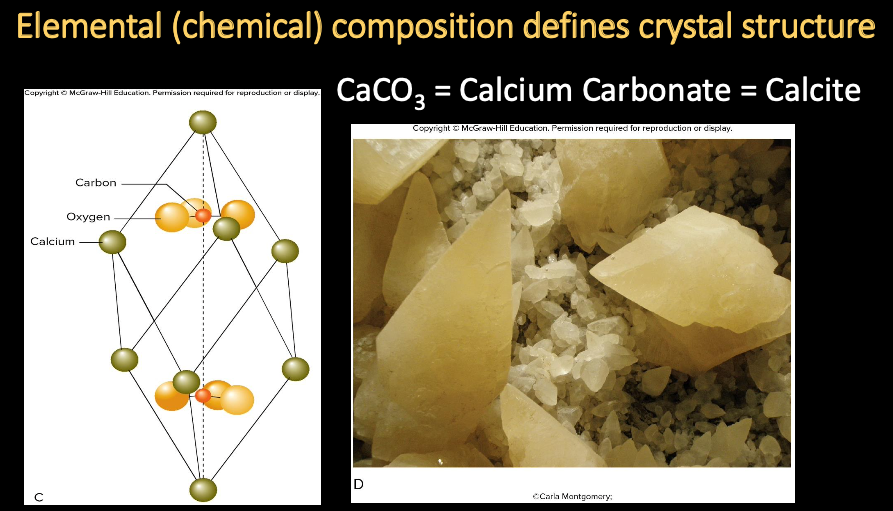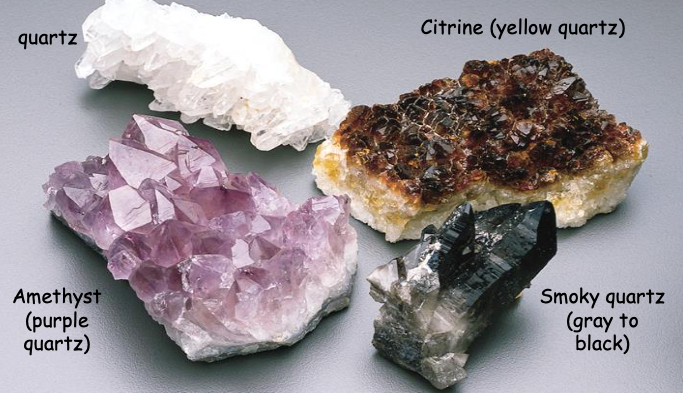Mineral
A mineral is a naturally occurring inorganic element or compound having an orderly internal structure and characteristic chemical composition, crystal form, and physical properties.
What is a Mineral?
Each mineral is characterized by a unique set of these 5 physical properties
- Naturally occurring
- Inorganic
- Solid element or compound
- Definite chemical composition
- Regular internal crystal structure


Identifying Minerals
-
Best to use technology to analyze the chemical composition and the crystal structure
-
Some are easily identifiable based on physical properties
-
Colour: Visible hue of a mineral (but not the best property)
-
Streak: Colour left behind when mineral is scraped on unglazed porcelain
-
Hardness: Scratch-resistance (Mohs hardness scale)
-
Crystal form: External geometric form
-
Cleavage: Way it breaks when struck
-
Luster: Manner in which light reflects off surface of a mineral
-
Density; Magnetic; Fizzes when acid dropped on it; Tastes like salt
Color is not unique

Types of Minerals
- Nonsilicates grouped by some chemical component or characteristic ⇒ often same negatively charged ion or group of atoms
- Carbonates - contain CO3 and dissolve easily, especially in acid; Calcite most abundant and most important in this group!
- Sulfates - SO4; Useful for building materials
- Sulfides - S; Pyrite (Fool’s gold); Host for many metallic ores (e.g., Pb, Cu, Zn)
- Oxides - any metal combined with oxygen; Iron and aluminum ores
- Native elements - minerals composed of single element
- Carbon as diamond and graphite (pencils!)
- Copper, gold, silver, or platinum
Minerals are worth looking at…
- over 4400 minerals have been identified, but only a few hundred are common enough to be generally important to Geology (rock-forming or money)
Related
- Rocks are formed from minerals